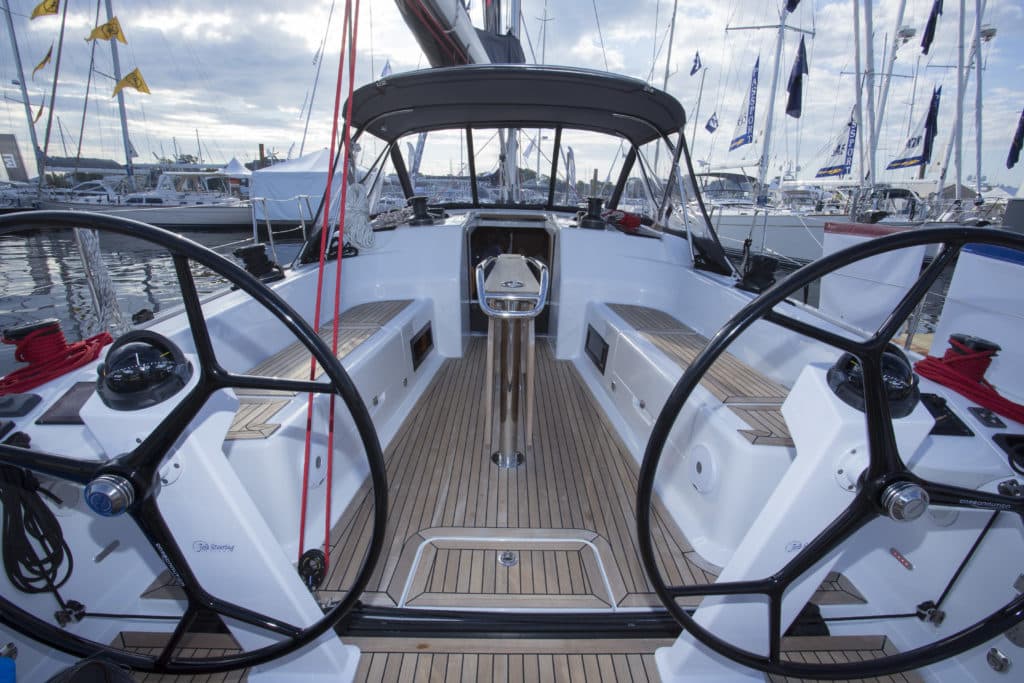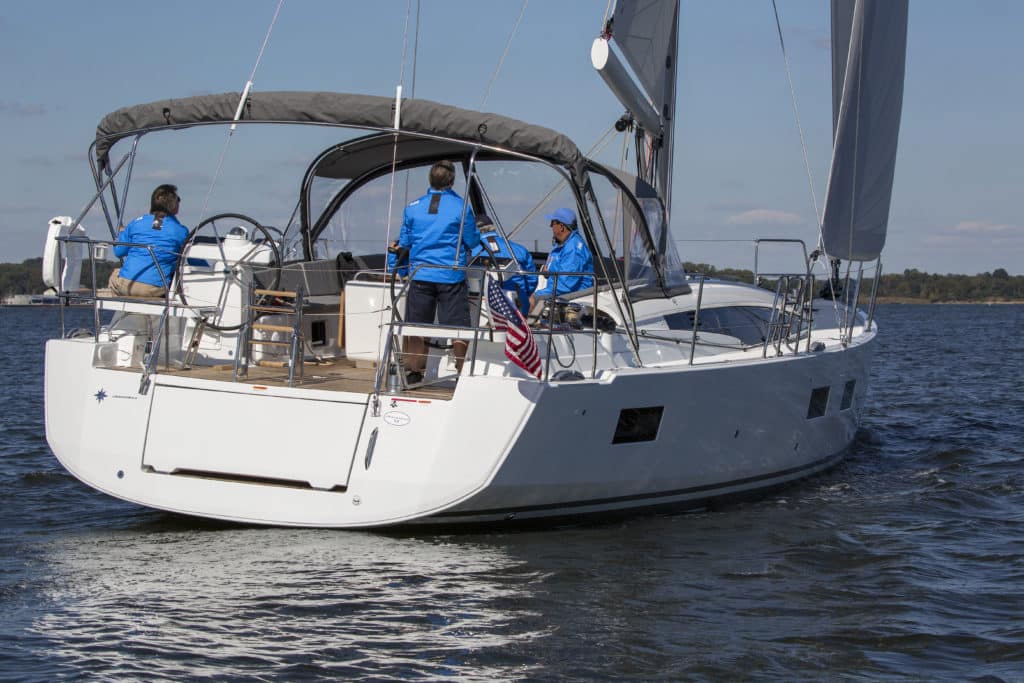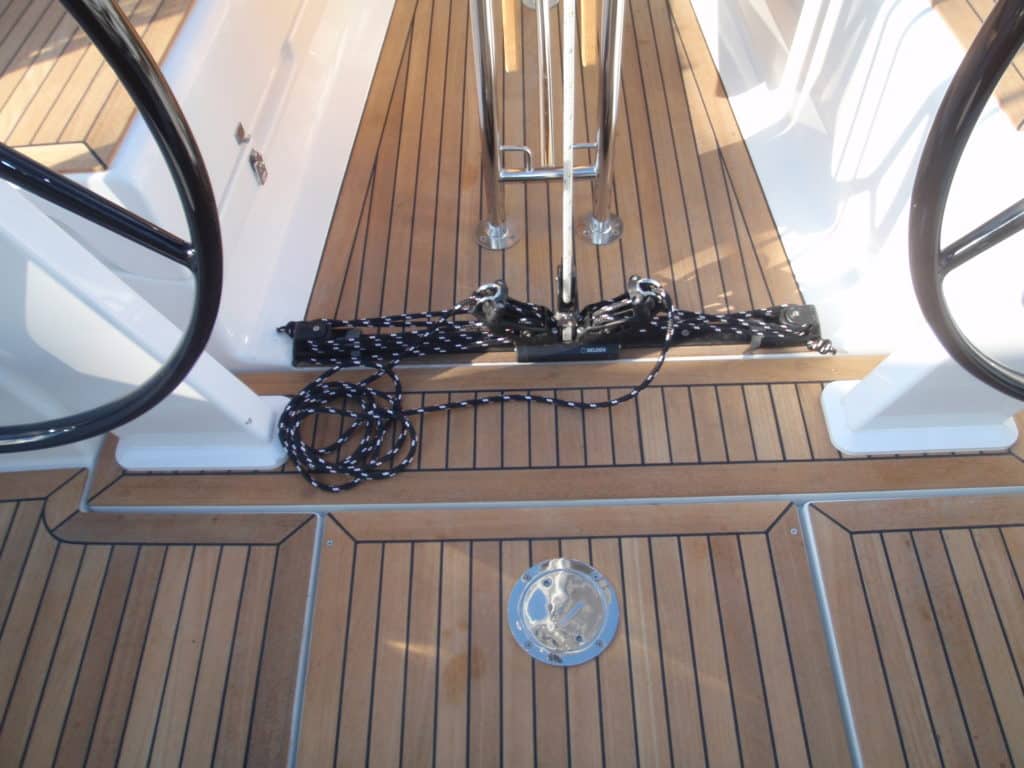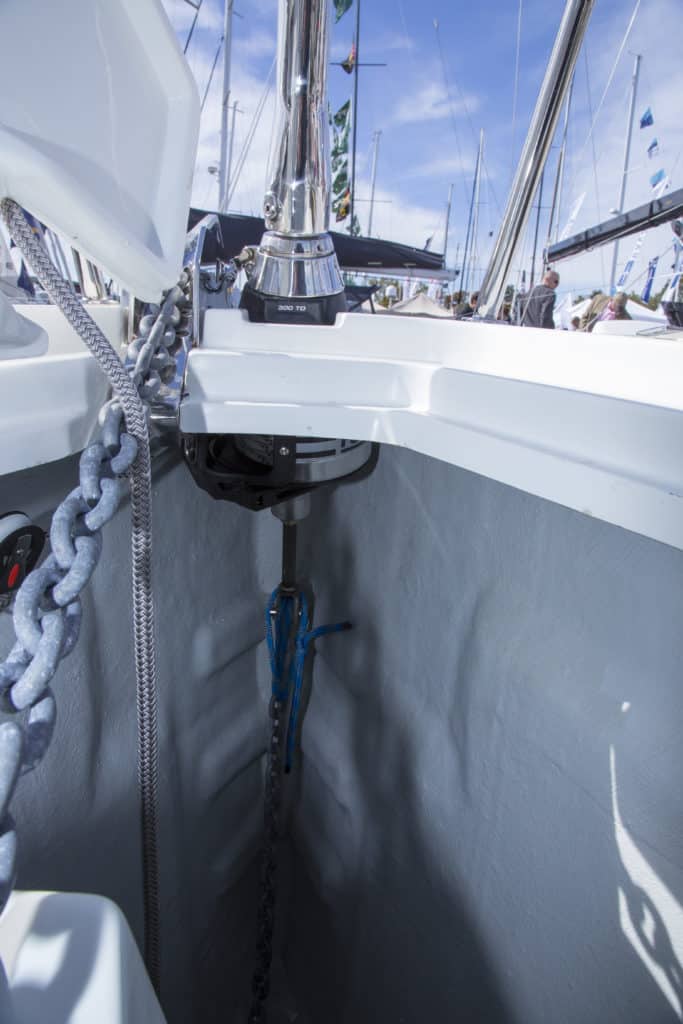
The Cruising World Boat of the Year contest tries to identify the best new offerings in a range of classes based on quality, value and performance. As the contenders are short-listed, the judges’ focus naturally narrows down to specific differentiating features. Thus it’s only when the contest is over, and the stacks of files and photos are collated, that we can get an overview of the state of the industry; identify new trends in design, construction techniques and materials; and explore the many small but innovative new features that we believe will survive the test of time.
The most obvious trend this year is that very few production boats are currently made in America. We tested entries manufactured in France, Italy, Germany, Turkey, South Africa, China and Croatia, but only the Marlow-Hunter had the screaming eagle on its builder’s certificate. This may be the result of the industry clearly consolidating into fewer, larger and more powerful players. Jeanneau and Beneteau, although in marketing terms independent of each other, are owned by the same umbrella group that also owns Lagoon multihulls. Even the English icon Moody has migrated east to Germany and the Hanse building complex, which also handles the Dehler line.
Design efficiency in the terrestrial environment of 90-degree angles, relatively unlimited space and stable platforms is fairly straightforward. But in the watery world of compound curves, compressed spaces and constant motion, balancing fashion, function and flow requires some nautical alchemy. Manufacturers seem to want to cover as many niches size-wise as possible, often relying on the expedient of upsizing or downsizing extant models. This year, the vessels that were simply upsized left the judges feeling as if the newfound space was wasted, and those downsized felt confused, with multiple sole levels, cramped sitting and dressing spaces, and an overall claustrophobic feel. The take-home message is that each design, while still incorporating signature features of the brand, should start as a blank piece of paper to achieve a holistic outcome.

Ideas from the Performance Cruiser Class
On the whole, cockpit efficiency and deck flow were markedly improved this year due to the crossover classes — that is, the cruiser/racers. In the past, the typical entry in this category was a full-on racing machine with only token concessions to liveaboard life or outdoor leisure. But manufacturers such as Dehler, Italia, Salona and Grand Soleil arrived at last fall’s Annapolis boat show with vessels that lost little on either side of the slash. These boats are exciting to sail, elegant to live in, and practical to cruise extensively.
We found this the hardest class to judge, because to declare one a winner implied that the others were losers, which they were not! Success in this category was built around twin helms in open-ended cockpits with full-length cockpit sole travelers (some recessed for safety), narrow sheeting angles, lightweight construction and ample sail area-to-displacement ratios (the average in this class being 26.25, as opposed to the midsize cruiser class average of 17.12).
Low cockpit coamings leading to wide, flat and clean side decks made the general flow forward wonderful. I could literally do unobstructed laps around the boats. The Italia 13.98 (the winner of the Performance Cruiser division) and Grand Soleil 43 cleared the cockpit for racing without sacrificing outdoor entertainment at anchor by cleverly recessing their tables into the cockpit sole.
All the crossover boats and most of the cruisers sported a plumb stem to increase their waterlines and therefore theoretical hull speed. That combined with very fine bow entries resulted in a tight working space on the foredeck and vulnerable gantry-style rollers to extend the ground tackle beyond the stem. In an attempt to decrease windage and create a clean and lean look, several of the performance cruisers went with recessed headsail furlers. In some cases, that created conflicts with access to the rode locker, subdeck line routing and maintenance.
Perhaps because of the high number of performance cruisers among this year’s entries, there was a noticeable decline in the number of in-mast mainsail furling systems. Putting the debate of convenience versus reliability aside, this translated into significantly better performance, since full battens and positive roach add substantial horsepower to any mainsail.
Several years ago the hard chine appeared in many of the major models, and now it has become a signature feature. While the chines may enhance hull stiffness and add a modicum of interior beam at the aft berth level, they are too shallow in angle and too highly placed on the hull to actually add any form stability. But my, they do look racy.

Cockpit Considerations
The traditional aft cockpit of years past might now be better described as a semicenter cockpit, as there was typically a substantial span of deck between the cockpit’s aft coaming and the taffrail. On the other hand, the majority of this year’s entrants, regardless of class, sported open transoms, allowing designers to push the functions of sheeting and steering to the extreme aft end of the boat. While this may sacrifice lazarette stowage, it also creates additional space to separate the workstations from the cockpit seating and allows for longer trunk cabins, thus increasing interior volume. Some models, such as the Italia 13.98, employ what I call a “trick transom” — a boarding platform that flips up and doubles as a hard transom — while others, like the Jeanneau 54, simply stretch lifelines athwartships aft. These open transoms offer ease of access aft, but the versions with only lifelines aft do not leave much structure between you and the deep blue sea.
The concept of separating work and lounging areas is taken a step further on the Azuree 46. Instead of traditionally mounting the sheet winches on the cockpit coamings running fore and aft, the Azuree runs athwartship binnacles forward of the twin helms, where you’ll find the sheet winches and electric controls. This setup is ergonomically superior to hunching over a wide cockpit seat to access the winches, and I believe it will become increasingly popular.
Cockpit tables have become substantial and sophisticated, incorporating built-in navigational screens, lighting, refrigeration, stowage, and hand- and footholds.
The once-popular large-diameter single wheel evolved not just to enhance steering sensitivity, but also to allow the helmsperson to steer from either side of the boat. The disadvantage was that the wheel too often blocked access forward to the sheet winches. The now nearly ubiquitous twin helms that have replaced the single wheel provide visibility from either port or starboard, and create perfect flow forward from the transom to the companionway. Necessity is the mother of invention. At 31 feet, the Marlow-Hunter has no room for the aforementioned twin helms, so instead a standard racing wheel on a canting pedestal can be swung from port to amidships to starboard. The wheel is also collapsible so one can take full advantage of the spacious cockpit when at anchor.
Apparently, today all lines lead to the cockpit as all roads once led to Rome. While this may eliminate the need to go forward, it also can result in a Gordian knot of tangled sheets, reefing lines, halyards and outhauls. Several entrants designed sheet wells in the cockpit sole or coamings. Those with drop-down lids then double as steps or walking areas. However, several entrants forgot to add a notch in the lid for the lines to lie in and allow the lid to close. With lines leading aft, reducing the need to work at the mast, mast pulpits are waning in popularity.

Going Forward
Grand Soleil has experimented with mounting a low-profile anchor windlass in a vertical position rather than the more typical horizontal installation. This eliminates the need for a horizontal mounting shelf, which inevitably restricts access to the rode locker.
Perhaps partly due to the popularity of cutter rigs and self-tacking headsails, throughout the 2016 fleet there remains a dearth of sufficient deck span to secure a RIB or hard dinghy. This leaves sailors with roll-up inflatables or davits, which may be suitable for daysailing and perhaps coastal cruising, but remain questionable for ocean passages. With the growing popularity of the solent rig, which moves the inner stay forward, toward the headstay, proper deck stowage will likely reappear.
With the exception of the traditionally designed Passport 545, drive shafts, packing glands, cutlass bearings and fussy engine alignments have been replaced by saildrives on the 2016 entrants. Along those lines, a small but clever innovation that I noticed is a recessed diesel deck fill. The cap sits in a small well that captures and funnels any minor spills. This makes for easier mop-ups and cleaner oceans.
But for a few exceptions, the industry seems to have agreed that outward-opening ports are accidents waiting to happen, as when a wildly flagging sheet inevitably wraps one up and carries it away. With translucent, modern materials of bulletproof strength, in-hull deadlights are appearing across the range, from the Marlow-Hunter 31 to the Beneteau 60.
Overall, and happily, it appears that boatbuilders are watching and learning from one another, and, dare I suggest it, even taking note of the mountain of data collected by the BOTY judges over the history of the event. This was a banner year for affordable midsize boats, fast and fun cruiser/racers, and elegant yet capable ocean voyagers.
Veteran voyager Alvah Simon is a Cruising World Boat of the Year judge and frequent contributor.








